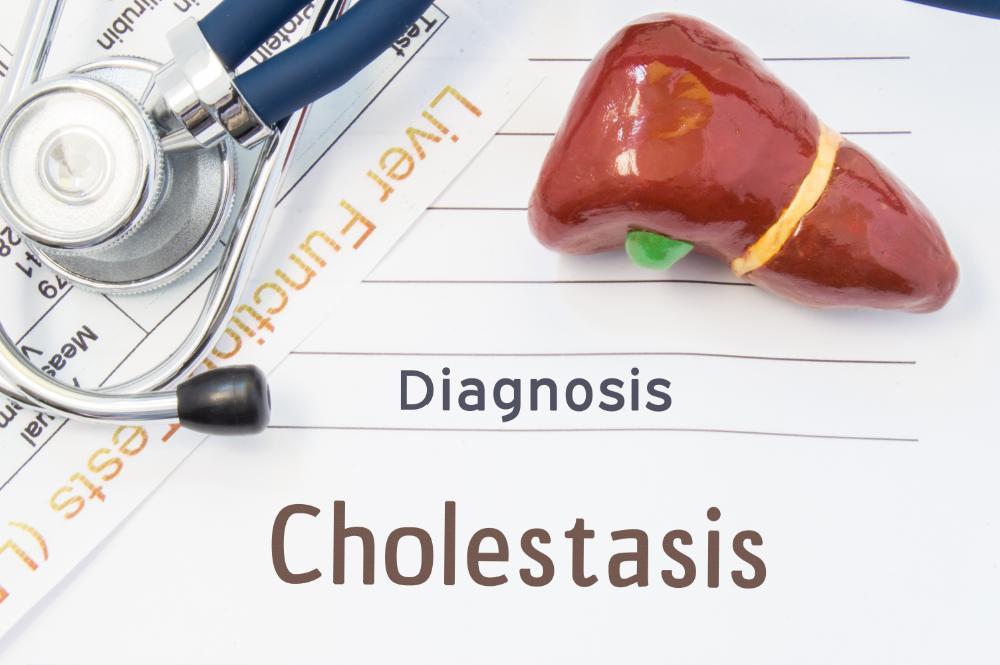Lowering Bile Acid Levels Can Help Heal Liver Damage
 Liver diseases like cholestasis occur when the normal flow of bile, a substance made in the liver to help digest fats, becomes blocked. When bile cannot leave the liver, it starts to build up, causing damage to the liver cells.
Liver diseases like cholestasis occur when the normal flow of bile, a substance made in the liver to help digest fats, becomes blocked. When bile cannot leave the liver, it starts to build up, causing damage to the liver cells.
This buildup of bile, especially its key component called bile acids, is toxic to the liver and can lead to inflammation, scarring, or fibrosis, and other serious problems. However, a new study shows that reducing the amount of bile acids trapped in the liver can help reverse this damage and begin to heal the liver.
Bile is produced by the liver and stored in the gallbladder. When we eat, bile is released into the small intestine to break down fats from food. Bile acids are the active part of bile that helps with this process.
But if the flow of bile is blocked — due to genetic conditions, immune problems, or side effects of certain medications — it can accumulate in the liver. This is what happens in cholestasis, where the bile and bile acids stay in the liver instead of being sent to the intestines. When too many bile acids build up, they become toxic and damage the liver cells, leading to inflammation, swelling, and eventually fibrosis, where the liver tissue becomes scarred.
The researchers of this study published by the American Journal of Physiology-Gastrointestinal and Liver Physiology, included Institute Chief Scientific Officer Saul Karpen, M.D., Ph.D. They used mice with a condition similar to human cholestasis to test whether reducing the amount of bile acids in the liver could stop or even reverse liver damage. They used two types of medicine to treat the mice. The first was an IBAT inhibitor, a drug that blocks bile acid absorption in the intestines, preventing the acids from being recycled back into the liver. The second was an FXR agonist, a drug that reduces bile acid production by turning off a specific pathway in the liver. The combination of these two drugs worked together to significantly lower the total amount of bile acids in the liver.
Interestingly, while the overall amount of bile acids in the liver dropped, the chemical makeup of the bile acids did not change. What that suggests is that it’s not necessarily the type of bile acid that causes damage but the sheer amount of them. By lowering the concentration of bile acids, the liver cells had a chance to heal, and the signs of liver damage, such as inflammation and scarring, decreased. Even after a short period of treatment, the liver showed improvement, suggesting that this method of lowering bile acids could be a powerful way to treat liver disease.
The study also found that the mice treated with the combination of drugs had lower levels of key markers of liver injury, such as ALT and AST — enzymes that show up in the blood when the liver is damaged. The reduction in these markers, along with the decrease in fibrosis and inflammation, indicated that the treatment not only prevented further damage but also helped reverse existing injury.
These findings are exciting because they offer hope for new ways to treat liver diseases like cholestasis. Right now, many treatments focus on managing symptoms, but this research suggests that targeting the buildup of bile acids directly can actually help heal the liver. Reducing the bile acid load in the liver could be a crucial part of future therapies for people with chronic liver conditions. This could mean that patients with conditions like cholestasis or other bile-related liver diseases might one day have more effective treatments that prevent damage and allow their livers to heal, improving their quality of life and long-term health.